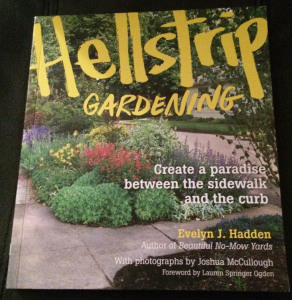 Have you or one of your clients ever despaired about the treelawn, known in some areas of the country, as a hellstrip? That space between the street and the public sidewalk is usually turf and a tree or two. Irrigation systems rarely extend that far and if your area of the country is inundated with snow, the treelawn is subject to massive amounts of salt spray. The same is true of tree beds within parking lots of shopping centers.
Have you or one of your clients ever despaired about the treelawn, known in some areas of the country, as a hellstrip? That space between the street and the public sidewalk is usually turf and a tree or two. Irrigation systems rarely extend that far and if your area of the country is inundated with snow, the treelawn is subject to massive amounts of salt spray. The same is true of tree beds within parking lots of shopping centers.
The solution to these problems is developing a garden there that can cope. Hellstrip Gardening: Create a paradise between the sidewalk and the curb by Evelyn Hadden is a treasure trove of inspiration and solutions. I suspect that this book will motivate you to re-examine the sites where you will be able to make a difference. In the process, you will add curb appeal to your property and smiles to those who walk or drive by. These spaces could also function as rain gardens, thus absorbing water that would otherwise end up in the sewer and/or as pollinator friendly gardens. Developing gardens in parking lots can reduce the temperature in these heat islands while also reducing the evaporation of gasoline and emissions from parked cars.
The first part of the book is a series of photographs (by Joshua McCullough) of curbside gardens meant to inspire you. These gardens from across the country are quite diverse. I’ve debated for a long time about extending my garden into the treelawn so these photographs really did inspire me but they also drove me crazy because many of the plants are not identified. Although the majority of the gardens are hellstrips, some are front yards that have substituted gardens for lawn.
The second part of the book addresses specific obstacles and challenges that exist in bringing to reality these types of garden designs by citing the experiences of other gardeners. I was particularly impressed with the sections on gardening under trees and with water, whether too much or not enough. The information is applicable to all landscapes.
The third part of the book is design solutions supposedly unique to curbside gardens. Choosing a style is one of them but it seems to me that this is a choice that any designer or gardener needs to make with any type of garden, regardless of site. Choosing certain types of plants, on the other hand, is crucial to the success of a curbside garden, a usually inhospitable site. Another solution is called earthshaping, basically creating berms or rain gardens, but this excellent information is, again, applicable everywhere.
The last part of the book is a compendium of plants for specific types of sites. Each plant is well photographed, described, and detailed with its zone hardiness parameters as well as its cultural requirements.
Although the title implies that this is a book for those who want to create curbside gardens, I believe that anyone who gardens or designs should read it. All of the information is useful and even though I’ve been gardening for over forty years, I learned a lot.


0 Comments